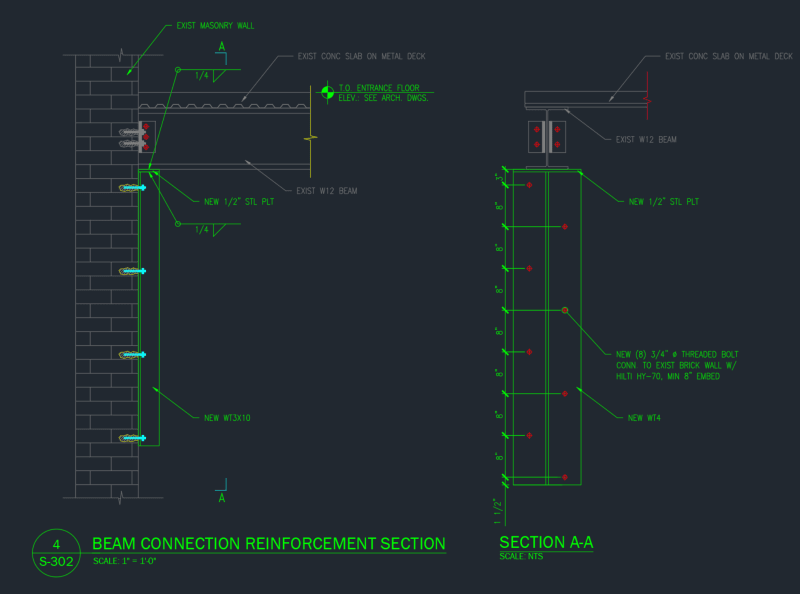I'm in the process of designing a wall mount to an old unreinforced hollow masonry wall. It was built in the early 60's, so I'm not surprised about the wall construction.
Anyways, my calculations are showing it needs to be grouted solid to support the needed loads. We also don't have have enough space on the inside of the wall to do a through bolt and a backing channel, so I'm trying to figure out what anchorage would be the best solution. I usually like adhesive anchors, but it seems odd to use that in wet grout. I also think a mechanical anchor probably doesn't really work in fresh grout either. I'm leaning towards a cast-in anchor, but I would prefer to not put a huge hole in the wall. Thoughts everyone?
Anyways, my calculations are showing it needs to be grouted solid to support the needed loads. We also don't have have enough space on the inside of the wall to do a through bolt and a backing channel, so I'm trying to figure out what anchorage would be the best solution. I usually like adhesive anchors, but it seems odd to use that in wet grout. I also think a mechanical anchor probably doesn't really work in fresh grout either. I'm leaning towards a cast-in anchor, but I would prefer to not put a huge hole in the wall. Thoughts everyone?

